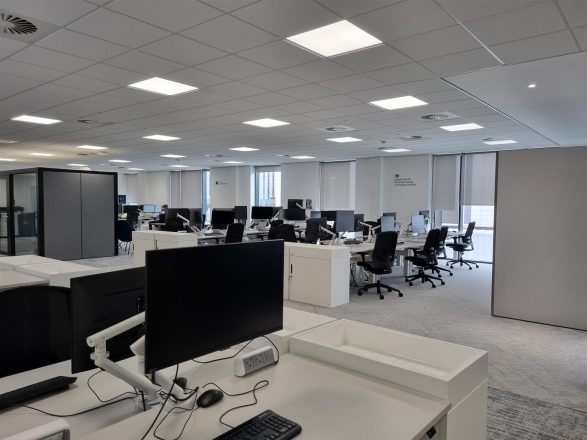Commercial office lettings, standard lease agreements and a lack of progressive landlords are generating unnecessary waste – and slowing the drive towards net zero.
That’s the view of Box Architects CEO Graham Place, who says it’s time to rethink our approach to office fit-out.
“It doesn’t matter whether it’s a brand new office or a refurbished historic building, the rules for tenants are the same,” said Graham. “Return it exactly as you found it. But that’s crazy.”
With 99% of UK businesses classified as SME, tenant turnover is high. “These businesses demand agility and opportunities for growth, so are most likely to enter into lease agreements of three to five years, sometimes less,” added Graham.
“The majority of these tenants have the same general requirements: attractive flooring, meeting rooms, good lighting, tea and coffee points… Yet each new tenant has to invest in carpets, partitions, furniture solutions and then, three years later, strip it all out again.
“Too often, the incoming tenant simply replaces the outgoing tenant’s fit out. As I say, crazy.”
Graham points to something as simple as carpets, which typically comes with a 10- or 20-year guarantee. “Product design generally outstrips average lease lengths,” he said. “Manufacturers are continuing to develop more and more low-impact products to support the global effort to reduce carbon emissions, but the nature of today’s commercial letting markets restricts the long-term benefits of these innovations.”
It’s not just striping out offices at the end of a lease that’s the problem – it can also happen before the first tenant moves in. Graham explained: “Too often, we see brand new buildings being provided to meet market requirements, with generic heating and cooling systems, and lighting layouts.
“Surely this is unnecessary. Let’s do these works when the tenant knows how the space is going to be configured, and where the partitions are going to be. Not build it and then change it.”
As for pre-used office spaces, Graham urges landlords to allow incoming tenants to re-use the outgoing tenants’ work. He added: “Draft a new lease that is not the same as every other lease written, but encapsulates the reuse of existing elements. To replace a carpet at every tenant change is immoral.”
But… how does Graham respond to the issue that every company believes their office requirement are unique? “Of course they do,” he said, “but, in reality, every company is the same in the way they want to provide a safe and engaging workplace to attract, develop and retain the best talent. The answer is to offer as much flexibility as possible; create spaces where people actually choose to be. That doesn’t need to change with every tenant.”
And what about remote working? “Yes, it’s great for work-life balance,” said Graham, “but during lockdown, we also saw issues of isolation and anxiety, and junior staff not getting the direct support they need.
“The office remains an essential component of any successful organisation – and it has to remain relevant. But relevance is not about throwing out the old every three years as the business develops. Relevance comes from an understanding of the demands of people and the demands of the planet.
“That means measuring carbon as part of the evaluation process when considering an office move – and choosing one with a progressive lease and a progressive landlord, where long-term carbon consumption is less.”
“Draft a new lease that is not the same as every other lease written, but encapsulates the reuse of existing elements. To replace a carpet at every tenant change is immoral.”
Graham Place, CEO, Box Architects
